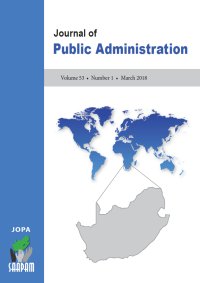
In a time of efforts to limit the nature and scope of government functions, the scope and practice of disaster management are expanding rapidly. Reasons for this include the increase in the number of natural and technological disasters, the number of people affected and dead and the rising cost associated with disasters. In this descriptive overview of disaster management the concept disaster and related concepts of hazard, risk and vulnerability are clarified. Disasters are classified into natural, man-made and hybrid disasters that could all be of sudden-onset or slow-onset nature. The complexity of disaster management due to its multidisciplinary nature, multi-institutional involvement and inclusion of all the basic management functions is pointed out. The traditional approach to disaster management based on the four phased disaster management model developed in the 1970s in which the four phases of disaster management occur in st